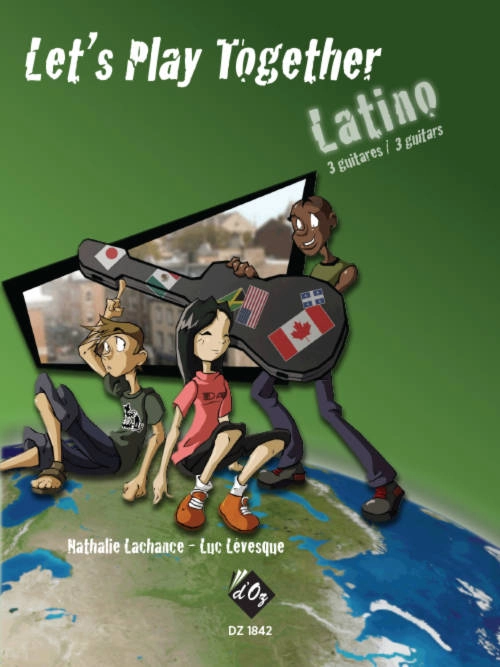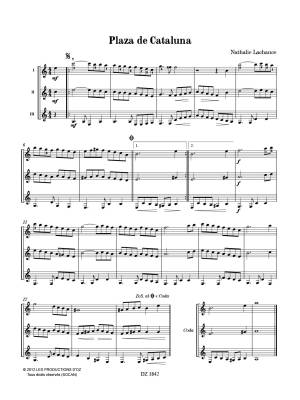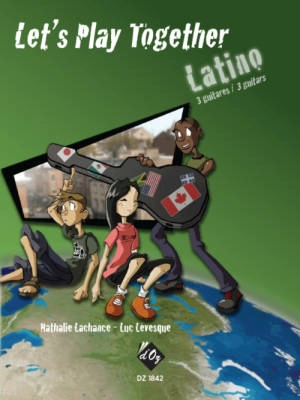Opens in a new window
Les Productions d'Oz Let's Play Together: Latino - Lachance/Levesque - Classical Guitar Trio - Score/Parts

Additional Photos:

- Author/Composer:
- LACHANCE/LEVESQUE
- Instrumentation:
- CLGTR ENS
- Model #:
- DZ1842
Format: Score and Parts
Instrumentation: Classical Guitar Trio
Level: Intermediate
"Plaza de Cataluna (Lachance) is a charming trio with undulating scales in two parts (usually a sixth apart) and occasionally three parts. Guitar One needs to go in fifth position, but the others can survive in first. Set in A minor, this is rhythmically very straightforward and yet has enough interest to keep the players concentrating on which of the scale notes are repeated and where the scales turn around. As a teaching topic, it combines harmonic and natural scales. In Le Badoneon, Levesque is a little more challenging, mixing triplet quavers with semiquavers, often with opposing, or should I say contrasting, rhythms in different parts. The music starts in E minor, moves to E and back. The interest moves around, but Guitar One again works in fifth position, and has the most demanding accompaniment when the limelight moves. El Vita (trad) has some big strums in E and A minor and that glorious Spanish feel comes over well. Guitar One goes up to fret 12 here, but the other two parts are more modest, yet an integral part of the arrangement, sometimes sharing the fast but easy melodic passages. La Fuente de MontJuic (Lachance) has the characteristic A-G-F-E descending bass that makes a non-guitar audience sit up and think of Spain. Here, use of ponti adds to the passion and vigour, and the rhythm and speed become that little more demanding. There are position shifts and arpeggios needing three left-hand fingers - a nice target to aim for after the earlier pieces. Zamba de Vargas (trad) has some strummed chords in 6/8 and some melody in 3/4 time, plus a little work for Guitar One in seventh position. It's a fun piece and makes a lot of noise too.
I'm a fan of this book - the flavour of the pieces is definitely 'guitar music' as opposed to 'classical music' and this, I think, will broaden its appeal in schools where the guitar is often the poor relative of the orchestral instruments. What better way to raise our instrument's profile than to present it doing what guitar does best? " - Derek Hasted (Classical Guitar Magazine)
Q & A
There are currently no questions for this product.
Reviews
There are currently no reviews for this product. Be the first to write one!




